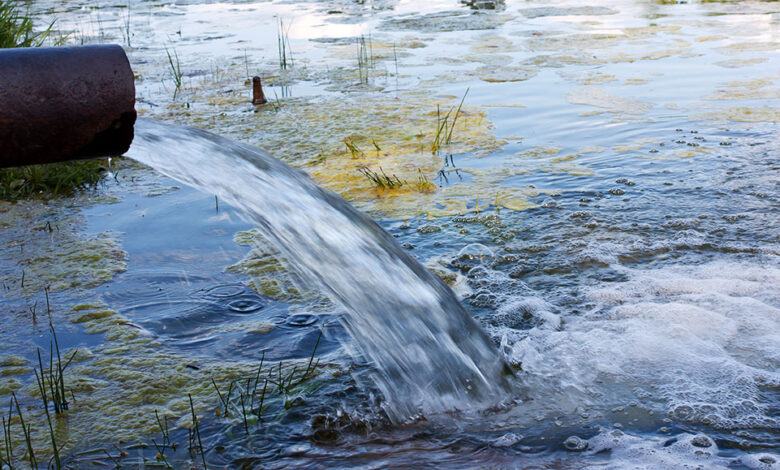New water treatment process removes pollutants most now don’t


activated charcoal: (also known as activated carbon) A form of carbon that comes as a powder or small granules. It is used to filter out things that may be harmful, smelly or impart a bad taste. The impurities sorb (attach) to the carbon. The small size of the particles increases the carbon’s surface area. So does the particles’ rough surface, which — like a sponge — has lots of pores that offer even more sites at which impurities can attach.
algae: Single-celled organisms, once considered plants (they aren’t). As aquatic organisms, they grow in water. Like green plants, they depend on sunlight to make their food.
algal bloom: The rapid and largely uncontrolled growth of any of various aquatic species in waterways that received a sudden influx of nutrients. They’re generally referred to as algal blooms. Despite the name, however, not all algal blooms actually involve algae. Some are caused by bacteria, others by protists known as dinoflagellates.
atom: The basic unit of a chemical element. Atoms are made up of a dense nucleus that contains positively charged protons and uncharged neutrons. The nucleus is orbited by a cloud of negatively charged electrons.
average: (in science) A term for the arithmetic mean, which is the sum of a group of numbers that is then divided by the size of the group.
bacteria: (singular: bacterium) Single-celled organisms. These dwell nearly everywhere on Earth, from the bottom of the sea to inside other living organisms (such as plants and animals). Bacteria are one of the three domains of life on Earth.
bloom: (in microbiology) The rapid and largely uncontrolled growth of a species, such as algae in waterways enriched with nutrients. Such blooms are often called algal blooms. But despite the name, not all algal blooms actually involve algae. Some are caused by bacteria, others by protists known as dinoflagellates.
carbon: A chemical element that is the physical basis of all life on Earth. Carbon exists freely as graphite and diamond. It is an important part of coal, limestone and petroleum, and is capable of self-bonding, chemically, to form an enormous number of chemically, biologically and commercially important molecules.
chemical: A substance formed from two or more atoms that unite (bond) in a fixed proportion and structure. For example, water is a chemical made when two hydrogen atoms bond to one oxygen atom.
compound: (often used as a synonym for chemical) A compound is a substance formed when two or more chemical elements unite (bond) in fixed proportions. For example, water is a compound made of two hydrogen atoms bonded to one oxygen atom. Its chemical symbol is H2O.
contaminant: Pollutant; a chemical, biological or other substance that is unwanted or unnatural in an environment (such as water, soil, air, the body or food). Some contaminants may be harmful in the amounts at which they occur or if they are allowed to build up in the body or environment over time.
dead zone: An area of open water where oxygen levels are so low that oxygen-dependent organisms cannot live.
DEET: An abbreviation for diethyltoluamide (N,N-diethyl-meta-toluamide). It is one of the most common active ingredients in insect repellents.
downstream: Further on in the direction in which a stream is flowing or the path stream water takes as it flows towards a lake or sea.
engineer: A person who uses science and math to solve problems. As a verb, to engineer means to design a device, material or process that will solve some problem or unmet need.
fertilize: (in agriculture and horticulture) To provide basic chemical nutrients for growth. Each of those nutrients is considered a fertilizer.
field: An area of study, as in: Her field of research is biology. Also a term to describe a real-world environment in which some research is conducted, such as at sea, in a forest, on a mountaintop or on a city street. It is the opposite of an artificial setting, such as a research laboratory.
gypsum: A common mineral often used as fertilizer, as chalk and in plaster. It is commonly found in the drywall used to construct interior walls and ceilings.
hormone: (in zoology and medicine) A chemical produced in a gland and then carried in the bloodstream to another part of the body. Hormones control many important body activities, such as growth. Hormones act by triggering or regulating chemical reactions in the body. (in botany) A chemical that serves as a signaling compound that tells cells of a plant when and how to develop, or when to grow old and die.
lagoon: A small body of seawater — usually fairly shallow water — that’s cut off from the open ocean by a sand bar, coral reef or narrow strip of land.
lime: (in Earth sciences) A caustic white alkaline material consisting of calcium oxide. It comes from heating limestone.
microbiologist: Scientists who study microorganisms, the infections they might cause or ways that they can interact with their environment.
nitrate: An ion formed by the combination of a nitrogen atom bound to three oxygen atoms. The term is also used as a general name for any of various related compounds formed by the combination of such atoms.
nitrogen: A colorless, odorless and nonreactive gaseous element that forms about 78 percent of Earth’s atmosphere. Its scientific symbol is N. Nitrogen is released in the form of nitrogen oxides as fossil fuels burn. It comes in two stable forms. Both have 14 protons in their nucleus.
oxygen: A gas that makes up about 21 percent of Earth’s atmosphere. All animals and many microorganisms need oxygen to fuel their growth (and metabolism).
phosphorus: A highly reactive, nonmetallic element occurring naturally in phosphates. Its scientific symbol is P. It is an important part of many chemicals and structures that are found in cells, such as membranes, and DNA.
runoff: The rainwater that runs off of land into rivers, lakes and the seas. As that water travels through soils, it picks up bits of dirt and chemicals that it will later deposit as pollutants in streams, lakes and seas.
system: A network of parts that together work to achieve some function. For instance, the blood, vessels and heart are primary components of the human body’s circulatory system. Similarly, trains, platforms, tracks, roadway signals and overpasses are among the potential components of a nation’s railway system. System can even be applied to the processes or ideas that are part of some method or ordered set of procedures for getting a task done.
toxic: Poisonous or able to harm or kill cells, tissues or whole organisms. The measure of risk posed by such a poison is its toxicity.
triclosan: A germ-killing chemical added to some common products such as hand soaps and sponges.
waste: Any materials that are left over from biological or other systems that have no value, so they can be disposed of as trash or recycled for some new use.
wastewater: Any water that has been used for some purpose (such as cleaning) and no longer is clean or safe enough for use without some type of treatment. Examples include the water that goes down the kitchen sink or bathtub or water that has been used in manufacturing some product, such as a dyed fabric.



